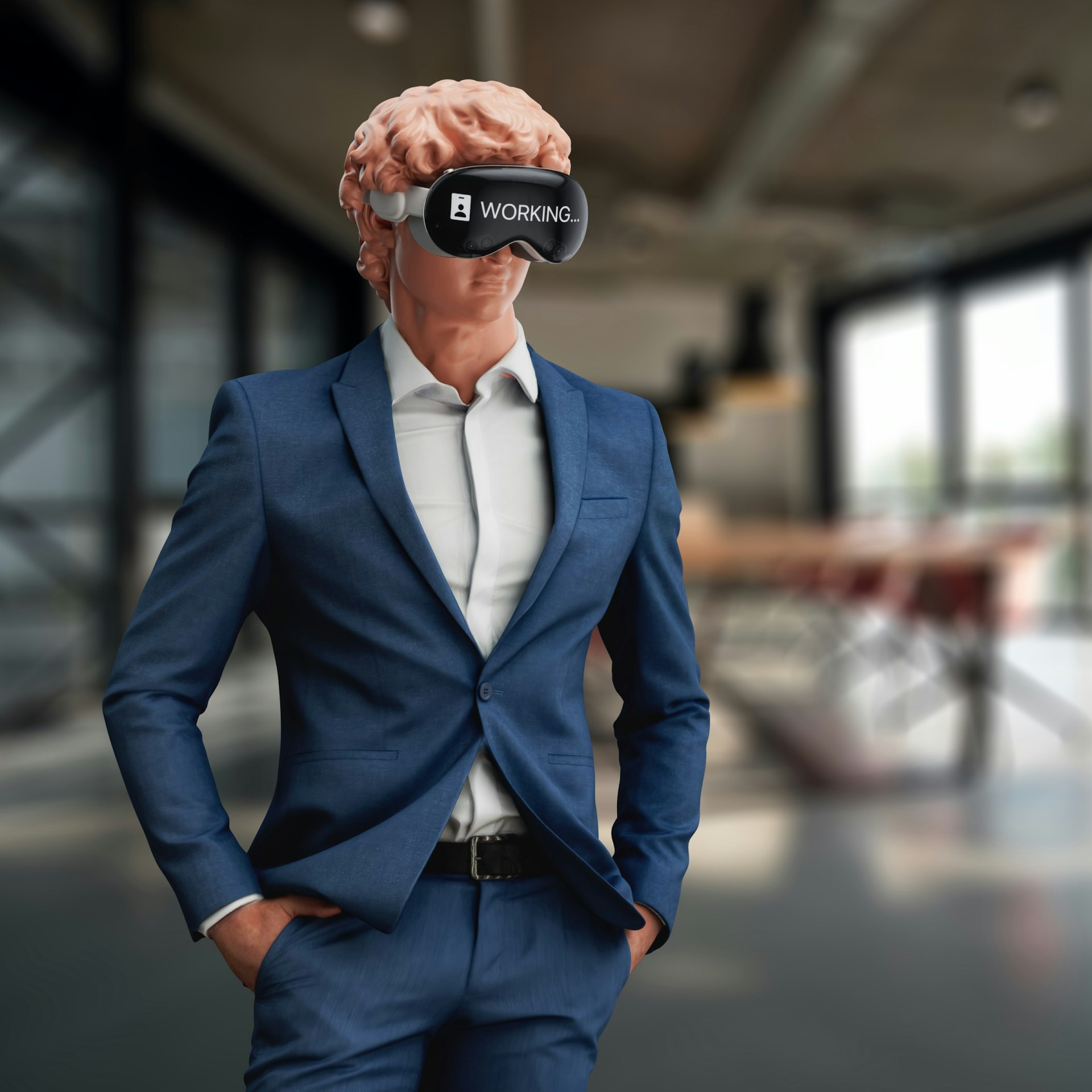How Virtual Reality Is Transforming Real Estate Marketing: Strategies, Solutions, and Results


Photo by Igor Omilaev on Unsplash
Introduction: The New Age of Real Estate Marketing
Virtual reality (VR) is rapidly revolutionizing the way real estate professionals connect properties with buyers. By providing immersive, interactive experiences, VR enables agents and brokers to showcase listings beyond the limits of physical showings, creating a competitive advantage in a crowded market. This shift is not a passing trend: leading firms and platforms are already using VR to attract more qualified leads, shorten sales cycles, and serve clients globally [1] , [2] . This article explores how virtual reality is transforming real estate marketing, offers detailed guidance for implementation, and discusses proven strategies for maximizing results.
What Is Virtual Reality in Real Estate?
Virtual reality in real estate refers to the use of digital technology to create immersive property experiences that allow prospective buyers or renters to explore spaces from anywhere in the world. These experiences range from 360-degree tours to fully interactive walkthroughs, often accessible with a standard smartphone, VR headset, or computer. Unlike traditional photos or videos, VR enables users to control their journey through a property, focus on areas of interest, and gain a deeper understanding of layout and spatial relationships [4] .

Photo by Igor Omilaev on Unsplash
Key Benefits of Virtual Reality for Real Estate Marketing
1. Enhanced Property Presentation
VR tours provide a level of detail and immersion traditional media cannot match. Prospects can navigate a property at their own pace, examining every room and feature in three dimensions. This deeper engagement helps buyers visualize themselves in the space, increasing emotional connection and recall [4] .
2. Increased Buyer Engagement and Lead Quality
Interactive VR experiences keep potential clients engaged longer and allow them to focus on features that matter most. This not only increases the likelihood of a sale but also helps agents qualify leads more efficiently, as engaged users are more likely to be serious buyers [2] .
3. Expanded Market Reach
With virtual property tours, agents can market listings to out-of-town, out-of-state, or international buyers who would otherwise be inaccessible. For example, luxury brokers often use VR to attract overseas clients who want to explore high-value homes before traveling for an in-person visit [4] .
4. Time and Cost Efficiency
VR tours dramatically reduce the need for multiple in-person showings, saving time for both agents and clients. Buyers can narrow down their options remotely, while sellers benefit from fewer disruptions. This efficiency can accelerate the sales process and reduce marketing costs [4] .
Real-World Examples and Case Studies
Sotheby’s International Realty has integrated 3D and VR tours on its website, allowing buyers to explore luxury homes from anywhere. Their listings include high-resolution images, floor plans, and immersive walkthroughs created with specialized cameras [1] . Zillow’s 3D Home app empowers agents to create their own virtual tours using a smartphone or compatible 360-degree camera, making the technology accessible to a broader range of listings and agents [1] . Matterport, a leader in 3D virtual tours, provides tools that realtors use to create and share highly detailed interactive experiences, sometimes leading to faster sales and higher closing prices [2] , [3] , [5] .
Implementing Virtual Reality in Your Real Estate Marketing
Step 1: Assess Your Goals and Target Audience
Start by identifying which properties or client segments will benefit most from VR. Luxury, relocation, and out-of-town buyers often gain the most value. Consider which listings could stand out with immersive tours and which clients are likely to engage with this technology.
Step 2: Choose the Right Technology
Options range from basic 360-degree cameras and smartphone apps to full-service platforms like Matterport or Zillow 3D Home. Evaluate:
- Ease of use – Does the platform require specialized hardware or technical skills?
- Integration – Can tours be embedded in your website or shared via social media?
- Cost – Compare subscription fees, equipment costs, and service options. Pricing varies, so research current rates directly on official provider websites or inquire with local vendors.
Step 3: Create Compelling Virtual Tours
Plan out each tour to highlight the property’s best features. Ensure good lighting, clean spaces, and clear navigation. Use high-resolution cameras or partner with professional VR content creators if budget allows. Some platforms, such as Matterport and Zillow, offer tutorials and customer support to help you get started [1] , [2] .
Step 4: Promote Your VR Listings
Share virtual tours on your website, major real estate portals, and social media channels. Include clear calls to action, such as inviting prospects to schedule a live virtual walkthrough or in-person visit after their VR experience. For maximum visibility, consider running targeted ads featuring your most impressive VR tours to reach remote or international buyers.
Challenges and Solutions
While virtual reality offers many advantages, there are potential obstacles:
- Technical Barriers: Some clients may lack access to VR headsets or high-speed internet. To address this, ensure tours are compatible with smartphones and standard web browsers.
- Learning Curve: Agents unfamiliar with VR may need training. Take advantage of provider tutorials and start with simple tools like smartphone-based 360-degree tours before advancing to more complex systems.
- Cost Concerns: While some solutions require upfront investment, free or low-cost options are increasingly available. For instance, Zillow’s 3D Home app can be used with a compatible smartphone at no additional charge for basic tours [1] .
If unsure which provider or approach to use, you can search for “virtual reality tour providers for real estate” in your area or consult with your local real estate association for recommendations.
Alternative Approaches and Complementary Tools
Augmented reality (AR) can also enhance real estate marketing by overlaying property details or staging options onto live camera feeds. Some AR apps allow buyers to point their smartphone at a building to view specs, pricing, and more, further streamlining the information-gathering process [3] . Additionally, 360-degree video tours, drone footage, and interactive floor plans can be used in tandem with VR to provide a comprehensive digital experience.
Getting Started: Practical Steps and Best Practices
If you are ready to implement VR in your real estate marketing:
- Research available VR platforms, such as Matterport or Zillow 3D Home, and assess which fits your needs.
- Acquire necessary equipment or partner with a local provider. Many realtors start with smartphone-based tours before investing in advanced 3D cameras.
- Plan tours to highlight unique selling points of each property.
- Promote your VR tours through your website, social channels, and real estate portals.
- Monitor engagement metrics and lead quality to measure effectiveness and refine your approach over time.
If you need assistance finding VR service providers, contact your local real estate board or association, or search online using terms such as “best virtual reality real estate tour companies.” For pricing or product demos, visit the official websites of platforms like Matterport, Zillow, or consult with authorized resellers.
Conclusion: The Future of Real Estate Marketing
Virtual reality is no longer a futuristic concept but a proven, practical tool for real estate marketing. By adopting immersive technologies, agents and brokers can offer more engaging experiences, expand their client base, and streamline the buying process. While implementation requires planning and adaptation, the rewards include higher-quality leads, faster sales, and a stronger market presence. For those ready to innovate, VR represents a unique opportunity to transform how properties are presented and sold.
References
- [1] MetaMandrill (2024). Virtual Reality in Real Estate; Clear Examples of VR in Real Estate.
- [2] The Close (2024). Virtual Reality for Real Estate: A Comprehensive Guide.
- [3] BigOhTech (2024). Top 7 Use Cases for AR/VR in Real Estate Industry.
- [4] Gecko Digital (2024). Real Estate Marketing with Virtual Reality Tours & 360 Media.
- [5] Influencer Marketing Hub (2025). Top 15 VR Marketing Examples for 2025.






